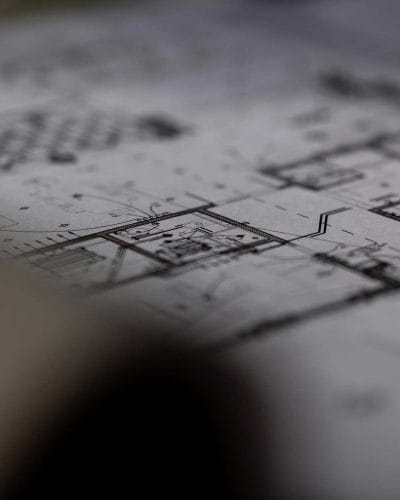What Does the Law Say About Altering Listed Buildings?
Now that you know the possible repercussions of altering a listed building without planning permission, it is time to take a look in more detail at what the laws in the U.K. say:
Executing or causing the execution of unauthorised works to a listed building in a manner which affects its character as a building of special architectural or historic interest is an offence under Section 9 of the Planning (Listed Buildings & Conservation Areas) Act 1990.
In short, it is a criminal offence if you go ahead with building work that requires planning permission but has not been approved. In the worst case, you could face up to 2 years in prison if convicted by the Crown Court.
How To Avoid Being Issued With a Planning Enforcement Notice
This is the important part and most of it does require common sense; if you have never altered a listing building before, you may need to seek advice.
Altering a listed home will require careful research and in most cases, outside professional advice; to be approved for planning permission for internal alterations to a listed building, you should work with a trusted architect with listed building experience.
Listed building consent can present many obstacles, from contacting conservation officers to considering reversibility. Your local authority will want to know exactly how you plan to preserve the architectural or historic interest of the building, which is part of a successful planning permission application.
Consider the following to obtain listed building consent:
- The listed status of the building you wish to alter or extend
- How you can respect the original character of the listed building
- Use of modern materials and why the local planning authority may favour this choice
- The overall design process and planning permission application
For more information, Christopher David Design offers a free consultation call for listed building projects.
Responding to a Planning Enforcement Notice
If you are served with a Planning Enforcement Notice by the local planning authority, it is important to stop all your development work immediately. If you do not do so, you will be at risk of a fine or prosecution for a criminal offence.
You should respond to the notice professionally and promptly to avoid any further repercussions. Before arranging your response, here are some steps to take:
- Read the Planning Enforcement Notice carefully and pay attention to the timeframe you have been provided with to prepare your compliance.
- Seek professional advice by consulting with a planning consultant, architectural designer or solicitor. Ensure that they have experience in historic buildings. They will be able to offer you some options for the next steps and best actions to take.
- Review the alleged breaches for any inaccuracies and if found, gather reasonable evidence to support the claim.
- Explore options to comply or negotiate with the local authority. While you may not be able to obtain planning permission for the work you originally intended, there may be an alternative solution.
- Be open and direct in your communication with the local planning authority. Contact the planning enforcement officer to discuss your Notice, ask any questions you may have and seek potential resolutions.
- Submit your formal written response by outlining your position, addressing alleged breaches and presenting any additional evidence such as reports or historical documents.
It is important to propose solutions to any of the breaches that were outlined in the Planning Enforcement Notice, by doing so, you are demonstrating that you want to resolve the issue. Listed buildings can be difficult to navigate but the rewards are immense.
Appealing a Decision to the Planning Inspectorate
When considering an appeal to the Planning Inspectorate, it is crucial to gather comprehensive documentation supporting your case, including detailed plans, expert opinions, and any relevant correspondence.
You will need to create a compelling argument that highlights the legal and procedural aspects that warrant a reconsideration of the decision. Therefore, it is important to enlist the advice of a qualified solicitor or planning consultant, who is experienced in listed building appeals.
The Planning Inspectorate operates independently and reviews the decision impartially, therefore, it can take some time for the Inspectorate to work on your case. To increase your chances of a successful appeal, timeliness is essential, as strict deadlines apply. Keep in regular communication with your legal team to navigate this process and in the meantime, ensure that you are not carrying out any works on your listed building.
What Are the Rules for Minor Alterations to a Listed Building?
Making minor alterations to a listed building will still require planning permission in the form of listed building consent. Whether you wish to remove walls on the interior or make any alterations to smaller structures such as an old outside lavatory, proposed works must be signed off by your local planning authority.
The rules for minor alterations to a listed building are governed by the Planning (Listed Buildings and Conservation Areas) Act 1990. If you do not gain planning permission, you will be breaking the law.
Listed building consent is applicable to both internal and external alterations and can only be obtained if you carry out a Heritage Impact Assessment. Material considerations are also very important since they will need to match the original materials used in terms of durability and appearance.
Do You Need to Obtain Written Listed Building Consent For Minor Works?
You may think that general repairs do not require listed building consent, but you are likely incorrect. Some repair works may even break the heritage laws, so it is best to always be safe than sorry and seek planning permission for a listed building.
Repairs – any small repairs must be carried out using like-for-like materials, this is to preserve the character and special interest of the listed building. For more extensive repair works, even those that affect the outside of the listed building, seek advice from your local planning authorities.
Internal alterations – listed building status applies to the whole building and consent is required for any works carried out across internal features, this includes cosmetic works too. For example, if you want to install double-glazing, you will require listed building consent.
Landscaping – if you wish to make alterations to any landscaping around the building, you will have to obtain listed building consent and consider how works affect the overall appearance of the property. This includes the likes of cutting down trees, bushes, and so on as well as removing any external structures detached from the property.
How to Legally Carry Out Listed Building Alterations and Extensions
It is imperative to work with a professional architectural designer for listed building consent. In doing so, you demonstrate the the local conservation officer that you are as committed as them to preserving the character of your wonderful historical building.
At Christopher David Design, we work closely with our clients to help bring their visions alive. Whether you want to extend your listed home or make alterations to the internal floor plan, we can assist. Contact us to discuss your listed property or building project and we will help you to overcome any obstacles you may be currently facing.


























